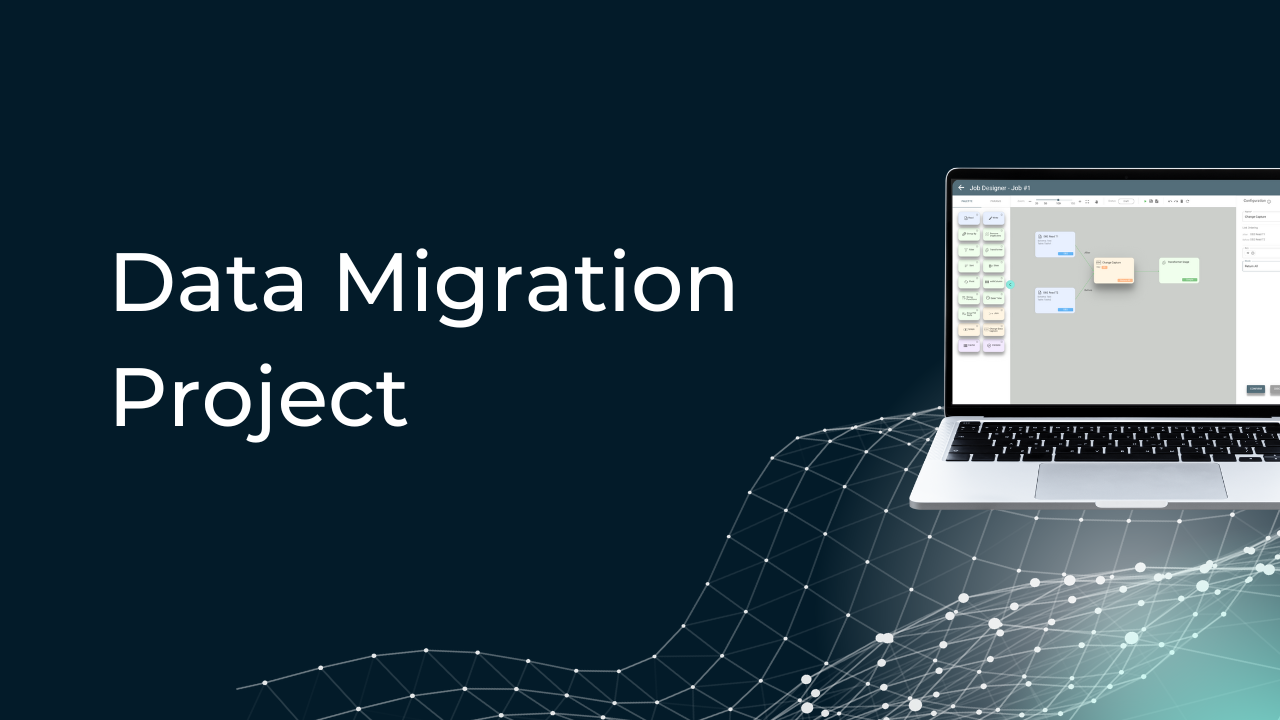
Table of Content:
Table of Content:


Microsoft Azure has been all the rage recently, and with all the cloud services it provides, it’s easy to see why people could feel overwhelmed. Don’t worry, however; we’ll concentrate on Azure Data Lake, one of its bright spots, in this article.
Introduction to Azure Data Lake
A cloud storage and analytics platform, Azure Data Lake is well-known for its massive data storage and analysis capabilities, as well as its security features, scalability, and connection with other Azure services. For this reason, it is highly recommended for companies seeking smart data management.
A data lake stores data in the same way as a lake keeps water. In essence, a data lake is a centralized location where businesses may store enormous volumes of both organized and unstructured data at scale.
A data lake storage contains data in its unprocessed state, in contrast to conventional databases. This eliminates the need for laborious preparation and enables the storage and analysis of a variety of data types. Data lakes are perfect for data-driven companies that need a rapid way to analyze massive amounts of data since they enable sophisticated analytics, machine learning, and real-time processing.
What is Azure Data Lake?
So, what is Azure Data Lake? With Azure Data Lake, you can store any kind of data, regardless of its size, and take advantage of limitless storage for structured, semi-structured, and unstructured data. It also supports big data analytics.
Cloud object storage from Microsoft, Azure Blob storage, is its foundation. Integrating with other Azure services, the solution offers low-cost, tiered storage and high-availability/disaster recovery capabilities. One of these services is Azure Data Factory, a platform for developing and operating ETL and ELT processes.
Azure Data Lake relies on the cluster management framework YARN (Yet Another Resource Negotiator) from Apache Hadoop. The data lake’s SQL servers, in addition to those in Azure SQL Database and Azure SQL Data Warehouse, may be dynamically scaled.
Key Components of Azure Data Lake
Data Lake Azure is made up of three major components that offer storage, analytics, and clustering capabilities:
- Azure Data Lake Storage (ADLS);
- Azure Data Lake Analytics;
- Azure Data Factory.
Let’s explore them in more detail.
Azure Data Lake Storage (ADLS)
A highly scalable and secure data lake, Azure Data Lake Storage (ADLS) is ideal for applications requiring high-performance analytics. The Azure Data Lake Store is another name for it, and you may hear it mentioned from time to time.
Azure Data Lake Storage is an integrated storage platform that aims to remove data silos by providing enterprises with a single point to store and access all of their data. With its tiered storage and policy control features, it may assist with cost optimization. Additionally, it offers Azure Active Directory-based single sign-on and role-based access restrictions.
Data stored in Azure Data Lake Storage may be accessed and managed using the Hadoop Distributed File System (HDFS). This means that Azure Data Lake Storage is compatible with any HDFS-based solution you may be using.
Azure Data Lake Analytics
An on-demand analytics platform for large data is Azure Data Lake Analytics. Over petabytes of data, users may create and execute programs in R, Python, U-SQL, and .NET that perform massively parallel data transformations and processing. Microsoft developed U-SQL, a large data query language, for their Azure Data Lake Analytics service.
Azure Datalake Analytics is an analytics-as-a-service platform that allows customers to pay per task for on-demand data processing. Using Azure Data Lake Analytics may help you save money on analytics since you only pay for the processing resources that you utilize.
Integration with Azure Data Factory
Microsoft Azure offers a serverless, fully managed data integration solution called Azure Data Factory (ADF). Here, users can design, plan, and execute data pipelines that consolidate data from several sources into one place, preparing it for analytics and BI.
Azure Data Lake Architecture
The architecture of Azure SQL Data Lake consists of several core components.
- First of all, the storage layer serves as a central repository that may hold all kinds of data in its original format, including unstructured, semi-structured, and structured data. Businesses may store varied datasets without transforming them beforehand, and this makes it easier to retrieve and analyze the data.
- Tools like Azure Synapse Analytics and Azure Data Lake Analytics are available at the data processing layer to quickly handle raw data. Users are able to execute complicated queries and do real-time analytics with the help of these tools, which reduces the need for lengthy data preparation and yields useful insights rapidly.
- Integrating with other Azure services is an important aspect that enhances the possibilities of the architecture. By integrating with Azure Machine Learning and Power BI, Azure Data Lake opens up new avenues for analysis and visualization. Overall, the data analysis process is improved by this interconnectedness, which guarantees a fluid workflow across several platforms.
The architecture’s support for many data formats, such as JSON, XML, and CSV, is also one of its notable features. Businesses may use whatever data they have, regardless of its format.
Best Practices for Implementing Azure Data Lake
Though there are some obstacles to overcome during Azure Data Lake implementation, you may maximize Azure Data Lake’s potential and have a trouble-free datalake experience by following our best practices.
Data Partitioning and Organization
Use partitioning strategies such as date-based or region-based to minimize data scanning, and analyze query trends to find the appropriate partitioning keys. Changes in data and access patterns need periodic reviews and adjustments to partitions.
Sort information into categories according to its value to the company, such as transactional vs. analytical. For better discoverability, employ descriptive files, and folder naming standards, and implement a tiered storage method (hot, warm, cold) for various data kinds.
You can automate data transfer and transformation with Azure Data Factory, improve data discovery with Azure’s Data Catalog for metadata management, and manage partitions and integrated analytics with Azure Synapse.
Data Security and Governance
Use the security capabilities of the Azure data platform to encrypt data both while it is in transit and at rest. Controlled access may be set up using Azure Virtual Networks and Network Security Groups. Identify and address vulnerabilities by conducting regular security audits.
Make sure that users may only access sensitive data via their designated responsibilities. Centralize your identity management using Azure Active Directory. Secure essential data access with multi-factor authentication.
Bring data policies in line with what is required by regulations like GDPR and HIPAA. To ensure that your business is following its standards and is being compliant, use Azure Policy. Make data governance and compliance training a regular part of staff training.
Data Lifecycle Management
Based on business requirements, establish explicit criteria for data preservation. Organize data into three stages: current, archived, and outdated. This will help you handle it more efficiently. To adjust to evolving company plans, it is important to evaluate data lifecycle policies on a regular basis.
Data retention may be automated with the use of Azure Blob Storage and rules for lifecycle management. Set up Azure Automation to take care of mundane chores like data cleaning and archiving. See how much space is being used and make changes to rules to save money.
Also, to save money while keeping data accessible for the long haul, use Azure Archive Storage. Create a plan for data retrieval as part of your archiving strategy. To make sure data is available, test archive retrieval procedures often.
Use Cases for Azure Data Lake
Data Lake Azure has several uses, and they span many different sectors. Having covered the basics of Azure Data Lake, let’s examine some use cases to see how businesses are putting this technology to work.
Big Data Analytics
With the Azure Data Lake storage, companies can quickly and easily analyze and handle massive datasets. The retail sector is a prime example; businesses there utilize ADL to study consumer habits and find ways to better manage stock. Retailers increase sales by making better product positioning and marketing selections based on real-time analysis of transaction data.
The banking industry is another promising area of application. Azure Data Lake Microsoft is used by financial organizations to track transactions and identify instances of fraud. These businesses can keep their consumers’ confidence and safety thanks to their rapid data analysis capabilities. And since it works with real-time information, companies can respond quickly to shifting consumer preferences and market conditions.
Data Science and Machine Learning
Online retailers use Azure Cloud Data Lake to provide shoppers with more tailored product suggestions. Machine learning algorithms improve the user experience and boost revenue by predicting and suggesting items based on buyer behavior and purchase history.
Meanwhile, manufacturing organizations rely on Azure SQL Data Lake for failure prediction of their equipment. Companies save expenses and downtime by combining it with Azure Machine Learning to construct predictive maintenance models. These models examine sensor data to detect possible failures.
The telecom sector also benefits from examining consumption trends to enhance client satisfaction. Telecom companies increase customer happiness and loyalty by examining data patterns and offering better service plans and targeted promotions.
Data Archiving and Historical Analysis
Businesses in the energy industry examine consumption trends using ADL. Accurately forecasting future energy needs and making appropriate plans helps smart grids operate more efficiently, distribute energy, and save money.
Azure Data Lake Microsoft is useful for educational institutions because it allows them to monitor student progress over time. In this way, they may adjust their lessons and pedagogy in response to changing patterns of student success, making sure that every student has an individualized learning experience.
When it comes to preserving public documents, government entities appreciate Azure Data Lake. It promotes openness and lends a hand to historical studies, making crucial data easily accessible to historians and politicians for complete analysis and informed decision-making.
Azure Data Lake vs. Azure Data Factory
Azure Data Factory vs Data Lake Azure are two of the most well-known services for data management in the Azure ecosystem. This table shows their differences in more detail.
| Key aspect | Azure Data Lake | Azure Data Factory |
| Purpose | Storage service for large data volumes | Data integration and orchestration service |
| Use cases | Big data analytics, data science applications | ETL processes, data migration |
| Benefits | Scalability, cost-effectiveness, and management simplicity | Automation, integration capabilities, real-time analytics |
| Examples | Retail analyzing customer behavior, finance analyzing transaction data | Extracting data from multiple sources into a repository, transferring data during cloud migration projects |
Conclusion: Maximizing the Value of Azure Data Lake
Again, what is Azure Data Lake? As part of Microsoft’s Azure platform, Azure Data Lake Storage (ADLS) provides a powerful analytics and data management solution that works in tandem with other native tools to their maximum potential. Reduced latency across Azure services is one of the many benefits of this platform’s optimized design for outstanding performance and cost effectiveness.
Want to learn more about Azure Cloud Data Lake and maximize the value of your data? With Visual Flow, you can turn your data into actionable insights and business choices. Built specifically for cloud environments, Visual Flow offers a full suite of data integration and transformation services, as well as comprehensive data engineering and consulting services. This includes support for Microsoft Azure Data Lake and other cloud data lakes and data warehouses. Don’t hesitate to reach out to us any time you need professional help.








Contact us






















































